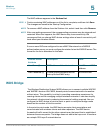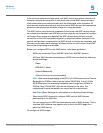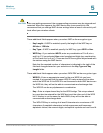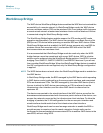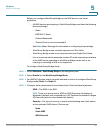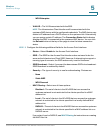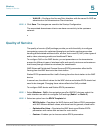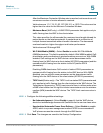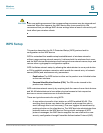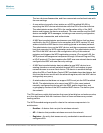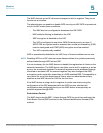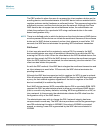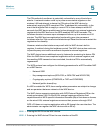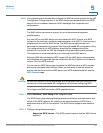
Wireless
Quality of Service
Cisco Small Business WAP551 and WAP561 Wireless-N Access Point 93
5
These four queues are defined for different types of data transmitted from WAP-
to-station. If you choose a Custom template, the parameters that define the queues
are configurable; otherwise, they are set to predefined values appropriate to your
selection. The four queues are:
• Data 0 (Voice)—High priority queue, minimum delay. Time-sensitive data
such as VoIP and streaming media are automatically sent to this queue.
• Data 1 (Video)—High priority queue, minimum delay. Time-sensitive video
data is automatically sent to this queue.
• Data 2 (Best Effort)—Medium priority queue, medium throughput and delay.
Most traditional IP data is sent to this queue.
• Data 3 (Background)—Lowest priority queue, high throughput. Bulk data that
requires maximum throughput and is not time-sensitive is sent to this queue
(FTP data, for example).
STEP 3 Configure the following EDCA and Station EDCA parameters:
NOTE These parameters are configurable only if you selected Custom in the
previous step.
• Arbitration Inter-Frame Space—A wait time for data frames. The wait time
is measured in slots. Valid values for AIFS are 1 through 255.
• Minimum Contention Window—An input to the algorithm that determines
the initial random backoff wait time (window) for retry of a transmission.
This value is the upper limit (in milliseconds) of a range from which the initial
random backoff wait time is determined.
The first random number generated is a number between 0 and the number
specified here.
If the first random backoff wait time expires before the data frame is sent, a
retry counter is incremented and the random backoff value (window) is
doubled. Doubling continues until the size of the random backoff value
reaches the number defined in the Maximum Contention Window.
Valid values are 1, 3, 7, 15, 31, 63, 127, 255, 511, or 1023. This value must be
lower than the value for the Maximum Contention Window.
• Maximum Contention Window—The upper limit (in milliseconds) for the
doubling of the random backoff value. This doubling continues until either the
data frame is sent or the Maximum Contention Window size is reached.



